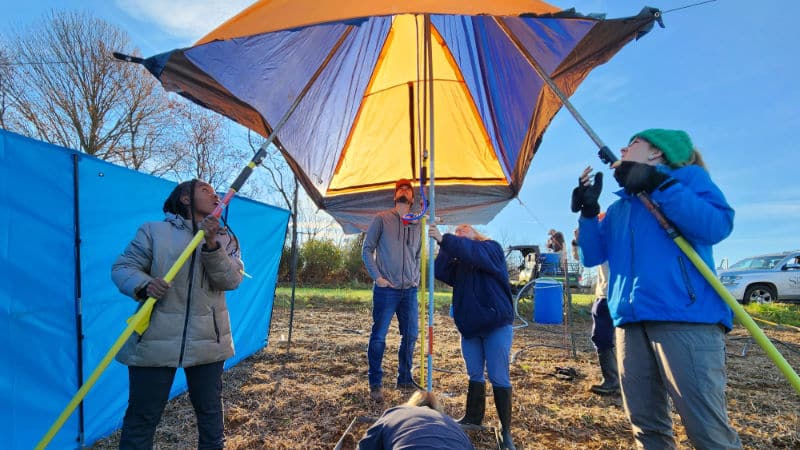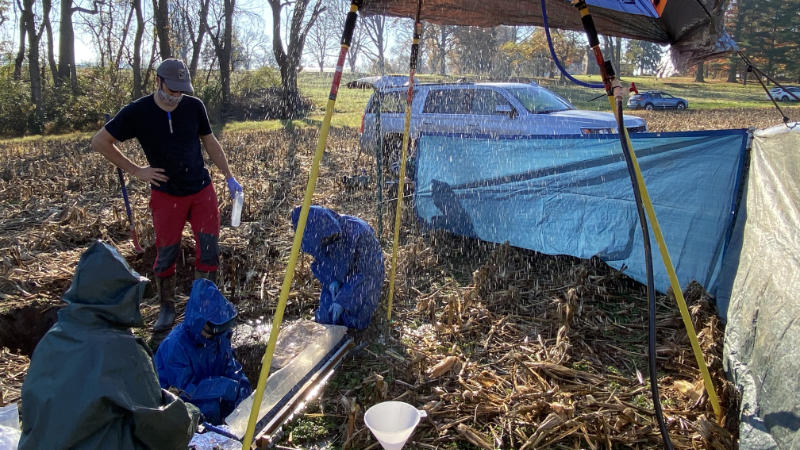How a Rainfall Simulator Helps Scientists Discover the Impact of Real Rain and Stormwater Runoff on Waterways

By Melinda Daniels, Ph.D.
If you follow Stroud Water Research Center on social media, you may have seen images of a rainfall simulator. The tool is used for experiments in which scientists study the impact of rain on a landscape, how easily that landscape produces stormwater runoff, and the impact of its runoff on streams and rivers.
But why use a rainfall simulator? Why not just sample runoff during a real rainstorm?
Rainfall only produces surface runoff when the rate of delivery exceeds the ground’s ability to let water soak in, or infiltrate. This can happen after a long steady rainstorm, a short intense downpour, or episodically during a storm as rainfall intensity shifts. As any weather forecaster will tell you, it’s not always easy to predict the type and timing of rain events, so neither is it easy to predict when a rainstorm will produce runoff.
Even if we could time our sampling, it can often be dangerous, slippery, and messy to be out in the middle of a storm, increasing the risk of injury or mistakes that may ruin our data collection. Finally, we can only be in one place at a time, so sampling multiple sites during the same conditions is impossible during natural events.
Our rainfall simulator allows us to make it rain during daytime work hours, when we have all staff available to be safe, well-organized, and careful in the scientific process. Because we can manipulate the rainfall intensity delivered by our simulator, we can produce a carefully controlled storm event of known volume and duration, and we can move our simulator, replicating the exact same storm event on different ground surfaces. This allows us to have scientific replication and greatly improves the robustness of our science.


Help Us Tool Up!
Scientific tools like a rainfall simulator are necessary for conducting rigorous research, but they often aren’t covered by grants. You can help us purchase needed tools and gear. Make a tax-deductible donation today. With your support, we can continue making discoveries that show people how to best care for the land and water around them.



